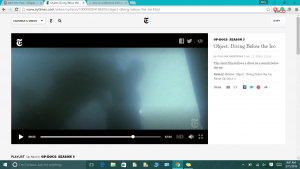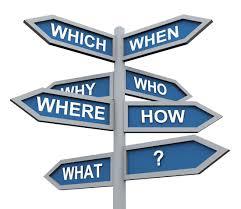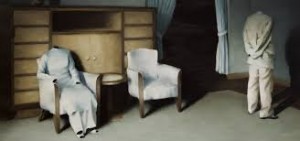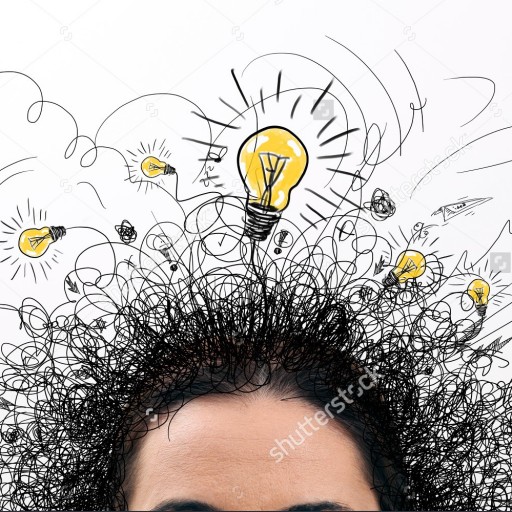During the library session, it opened my eyes to a lot of the amazing resources that are available to students at Ole Miss. It was great to know that I can access any of these websites and sources whenever I need them. I had heard about the sources that the library offers but had never known how to navigate through them. At the session, I learned how to access everything and what is the best source for the project that I am working on. Another great thing that I discovered is that there is a librarian for every major. This is a great resource to know about for when I enter more into my major classes.

During my paper, I wrote about the absence of identity and how the filmmaker never actually states what the diver is doing. This element of not being straight forward about the mission of the diver keeps the audience guessing and grabs their attention to figuring out what this video is all about. However, during this section of the film, is the first and only time that the viewers get a glimpse into the heart heavy task that the diver is carrying out. Once the audience sees this scene they are being pulled by the element of pathos, in a way that everyone can connect to in some way. The reason for this is because during this part of the film the audience sees the diver retrieving another fellow diver and bring them up from the bottom of the ice. After this scene, the audience can start connecting what the rest of the Op-Doc has been showing and the directors statement. When the viewers see that they’re retrieving a deceased diver the information in her director’s statement about “the grave” and “the object” starts the become clear. Also, there is some clarity for the first scene shown of the ice when there were two objects below the ice and the audience is trying to figure out what these objects were as if the director was foreshadowing what was to come.

The image above represents the activity we did in class that made us break down the Op-Doc in a way that we had to answer three questions. The questions were How,Why, and So what. This meant how did the director carry out their message, Why did they use that technique to do so, and so what did that do for the readers and the film. This activity helped me figure out a way of how to approach the assignment. Before we looked at how to break down the video with these three questions and take it deeper I had no clue of the direction I wanted to take this project. Once I was able to answer the questions about the whole video I then could answer these three questions about more specific parts of the film such as the visuals, sounds, and in my case the absence of certain elements. With having the three questions in mind I also could create my main idea and they became the bases of development for my whole paper. Since I completed this task I was able to see what I was going to focus on throughout my analyze.

I chose this image of people with no faces and an empty chair becuase this shows the absence of idenity and language. My thesis for this paper discussed the absence of idenity and the use of visuals and sounds that heightened the intensity of not knowing what is it that the director is filming. The people in this picture have no faces/heads which means they have no idenity and the empty chair symbolizes the absence that I discussed within my thesis. The director also never used dialog in the film, which become unnesscary by the visuals and angles she used within the film. The picture above displays this with not having a face.
Outside of The New York Times, in writing, we had a peer review where I was able to read and suggest ideas to another student. This task helped me in my own writing in the way that it mad me think about what elements did this student us that I could use in my own paper. This made an important impact on me because it helped me make my writing stronger as well as helping someone else make a strong paper.
Within The New York Times, I read an article over sharing on social media between the family. The article “Don’t Post About Me on Social Media, Children Say” discusses the reactions of parents and children when it come to sharing photos of each other and life moments. The children were the most outspoken when it came to not wanting their pictures to be shared. This creates the argument of what is OK to share and what isn’t and should parents share the early moments of a child’s life before they can give consent. The article opened my eyes to this issue because I have never thought of it that people could have a problem with their parents sharing funny or special moments in their children’s lives. I see the point of the children in that they want to monitor their digital identity but I also see the side that the parents have a right to share their story that happens to include their children. I agree that the parents should think further in advance when deciding what to share and post. Also, the possibility of not allowing their children’s friends to follow these account in order to avoid embarrassing remarks towards the parent posts.
In grammar and writing, there is always something that someone struggles with. Personally, my most common mistake is not rereading my paper. I always end up convincing myself that since I was the one writing I already know what is on the paper so why reread it. Confession: I typically have someone else do if for me because I can’t get myself to do it. Although, I know my papers need rereading and editing it’s always hard to make myself sit down and do it.
#Goingdeeper
This is the hashtag that I would give to analyze because when you’re analyzing a piece you are going deeper into the meaning and almost what is “behind the scenes”. When doing an analyze one most find the deeper reason for why the author chose to do something or why they included/didn’t include something. It really makes you think further than summarizing the document.
This week in The New York Times instead of reading articles we watched and looked at Op-Docs. An Op-Doc that stuck out to me was the one over sexual orientation in other countries. This really opened my eyes to what’s happening not only in the united states but also in other countries, often to a worse extent. This Op-doc followed a homosexual activist around his hometown while interviewing him about all the things he has gone through and how he handles his sexuality within a society that doesn’t approve. It was interesting to see how much worse he has it in his country because in recent years this has become a large topic of discussion within the United States as well. However, in the United States LBGT community was fighting for marriage rights but in this country, they’re fighting for the right to live. It makes you think about how all over the world we can be dealing with the same topic of the issue but on different areas and places within the movement.
Outside of The New York Times, I read a card from my mom that I had gotten from valentines day. She put a bible verse inside the card and her message of saying that she was proud of me. Getting a message like this reminding me of what I’m doing in light of my mom really made me feel good about myself. Before I read the note, I was stressed and didn’t know how to get through the week but what my mom had to say really helped me take on this week.
For the op-doc that I am using”messages and meaning” will be the questions that I focus on the most. This is because my video I have chosen is solely video and no sound it will be important for me to look at the content and techniques that the director uses. Object; diving below the ice has a great visual aspect that I can really pull from to write my analyze. My plan is to pick apart each technique and visual tool she used and how it impacts the way that the audience interrupts and views the film. Do to the video not having words I plan on using the footage for the content. Also, do to the video being so recent of in being published and made no real context or effects have been made so I plan on trying to find a new twist on that section.
For writing our literacy guides we were given a set of requirements that the guide had to contain. One of the requirements that I enjoyed working with was the writing process and style. As a journalism major I enjoy writing when I am able to add my voice and personality into the writing. In my opinion, this makes the writer and audience feel more connected to the writing assignment and each other. Another one of my favorite parts of writing is the creative aspect. I had fun creating a unique theme and different section titles that held my personality and voice. However, not all parts of this guide were easy. A challenging part of this guide for me was which sections of The New York Times should I use, how should I order them, and how much do I write on each section. This was a struggle for me given that the paper has an abundance of opinion articles of all different forms. For example, I had to think about whether or not the comments section needed its own paragraph or if they should just be lumped in with another topic or if the Op-eds are more resourceful than the editorial boards. I had to reorder my paper, at least, five times trying to create a layout that reflected the order of usefulness and importance to forming your own opinion. The length was another struggle I had when writing on each of the sections. I had to figure out how much it took to get my voice across with using all the required research and examples. I also needed to consider which sections needed to be further explained than others. Something that helped me when writing this guide was the assignments we did in class in the weeks that we were exploring The New York Times. The assignments taught me how to navigate and seek articles of all types throughout the paper. When we looked at the most popular page also helped me a great deal when I was writing my literacy guide. One of the requirements was including the influence and interaction of social media with the articles. The most popular page gave me opinion articles that were ranked most shared, viewed, and searched. With this resource, I could show supportive evidence that the opinion sources that I used were also used by copious amounts of other people as well. Lastly, during this project I learned a lot of useful things about writing. To me, one of the most important things this project has taught me was how to identify a writing type, style, and what details supported that finding. Before the literacy guide, I didn’t know how to clearly identify a writing style and describe it. However, now I am able to explain to another person with examples of why I can tell what writing style articles are. I also learned how a authors personality seeps through their writing and how much of an impact hat can make. I find writing when the author incorporates their opinions and voice more enjoyable than strictly fact based writing. Frank Bruni an op-ed columnist was a great example of this that I found during my research for opinion sections. His writing style is full of passion and reason while at the same time he tells the audience about himself as well.
This week I read a lot of good articles in The New York Times although the one that was most significant to my life was the an article about the correlation between hours a sleep and chances of catching a cold. It was interesting to hear that body’s activities while you sleep help protect from developing a cold and the people getting the recommended amount of 7 to 8 hours were least likely to become ill. However, as you read further into the article it begins to say that if someone has too much sleep they too will be susceptible to catch a cold. The presence of the inconstant information showed that it hard to pinpoint that sleep deprivation is the cause of illness but that it may help along the process.
Another article that I read outside of The New York Times was an article and instructions on how to create a cover letter and résumé . This helped me a lot when I was applying for a job and taught me how to write and word job descriptions in a way that it will sound more appealing to your potential employer. After reading the article and instructions I feel more confident when I am applying for jobs and that I am doing what employers look for in potential applicants.
Today in class we had a goal of learning more in depth on how to navigate in The New York Times newspaper. Once breaking off into small groups we discussed each topic, article form, and how we knew it was that form. One of my partners told us about how she was able to find three completely different versions of online news all on the same topic. I found it interesting that she used a frequently asked questions page and that I should look into that about the topic I am considering on researching. Another quality I liked about the way she went about the assignment was that she got her articles from three different categories. The three categories were science, health, and opinion which is a great range of different views on one subject. I want to keep this in mind when I am looking into The New York Times when doing the readers guide on How to stay healthy under the pressure of life. I think today in class with the discussions from what other students found is going to help me greatly when trying to find different sources and articles because I know that I struggled some when working on my own homework.




 Welcome to My Thoughts
Welcome to My Thoughts